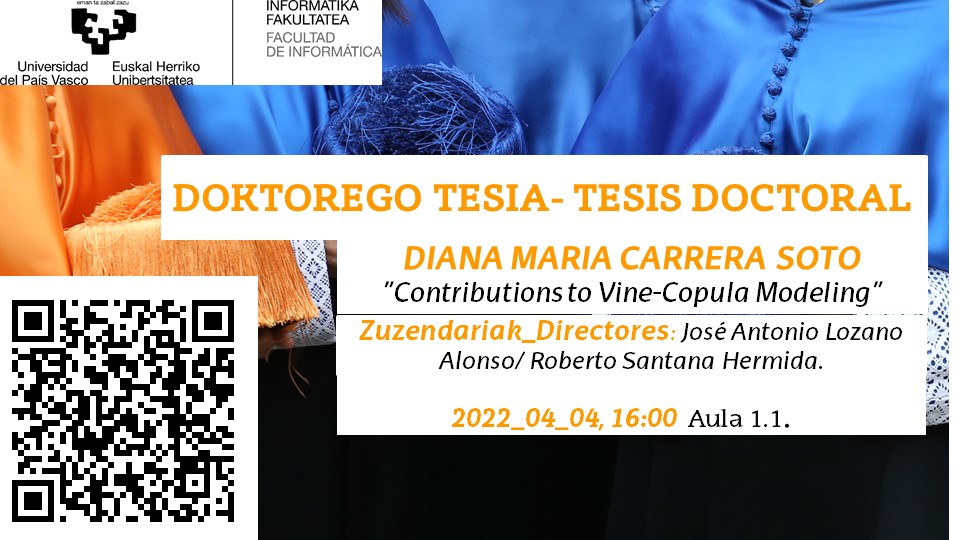2022_04_04 DOCTORAL THESIS DEFENCE DIANA CARRERA SOTO
First publication date: 31/03/2022

Diana Maria Carrera Soto: ”Contributions to Vine-Copula Modeling”
Zuzendariak_Directores: José Antonio Lozano Alonso/ Roberto Santana Hermida.
2022_04_04, 16:00: Aula 1.1.
Abstract:
Regular vine-copulas (R-vines) are a powerful statistical tool for modeling the dependence structure of multivariate distribution functions. In particular, they allow modeling different types of dependencies among random variables independently of their marginal distributions, which is deemed the most valued characteristic of these models.
In this thesis, we investigate the theoretical properties of R-vines for representing dependencies and extend their use to solve supervised classification problems. We focus on three research directions. In the first line of research, the relationship between the graphical representations of R-vines and Bayesian polytree networks is analyzed in terms of how conditional pairwise independence relationships are represented by both models. In order to do that, we use an extended graphical representation of R-vines in which the R-vine graph is endowed with further expressiveness, being possible to distinguish between edges representing independence and dependence relationships.
Using this representation, a separation criterion in the R-vine graph, called R-separation, is defined.
The proposed criterion is used in designing methods for building the graphical structure of polytrees from that of R-vines, and vice versa. Moreover, possible correspondences between the R-vine graph and the associated R-vine copula as well as different properties of R-separation are analyzed.
In the second research line, we design methods for learning the graphical structure of R-vines from dependence lists. The main challenge of this task lies in the extremely large size of the search space of all possible R-vine structures. We provide two strategies to solve the problem of learning R-vines that represent the largest number of dependencies in a list. The first approach is a
0 - 1 linear programming formulation for building truncated R-vines with only two trees. The second approach is an evolutionary algorithm, which is able to learn complete or truncated R-vines. Experimental results show the success of this strategy in solving the optimization problem posed.
In the third research line, we introduce a supervised classification approach where the dependence structure of the problem features is modeled through R-vines.
The efficacy of these classifiers is validated in a mental decoding problem and in an image recognition task. While R-vines have been extensively applied in fields such as economics, finance and statistics, only recently have they found their place in classification tasks. This contribution represents a step forward in understanding R-vines and the prospect of extending their use to other machine learning tasks.


